 Interview conducted by Olivia FrostFeb 10 2022
Interview conducted by Olivia FrostFeb 10 2022In this interview, Dr. David Honigs, Ph.D, the Field Applications Scientist at PerkinElmer, Inc., talks to AZoM about poultry and NIR spectroscopy.
Could you introduce yourself and explain your recent experiences in relation to poultry and NIR Spectroscopy?
I am David Honigs and I work for PerkinElmer instruments. It would be my pleasure to tell you what I have seen in my years of traveling around North America to different poultry processors. From chicken to turkey raising, there are many different kinds of farms operating, and many of them use near-infrared spectroscopy or NIR instruments.
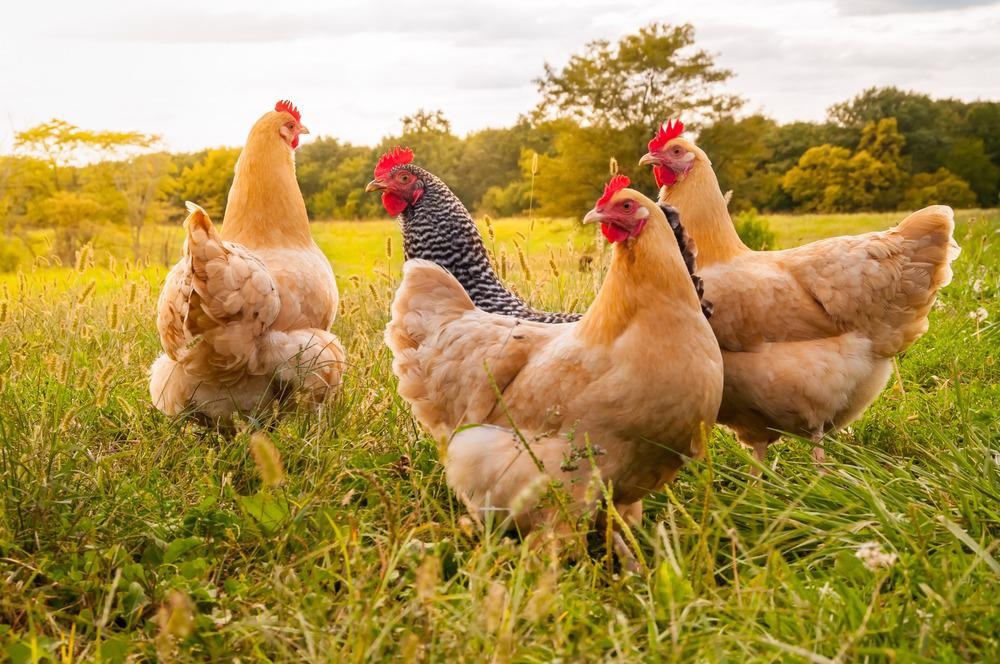
Image Credit: ShutterStock/Moonborne
Whether it is the largest processor in the nation or a small independent farm with one site, there is at least one affordable and suitable level of instrument available. I believe that using an NIR instrument to make a measurement is a profitable endeavor for all sizes of processors.
What do different poultry processors use NIR for?
The medium and large operations that I have visited use the near-infrared routinely in three different ways. Primarily, they use it to monitor their incoming feed.
If I were to assess the types of operations that are out there, I would also say there are two categories. There are those that measure incoming materials – their incoming feed – and there are those that do not. There is really only one way to succeed and that is to make the measurement. If you do not measure, you start behind and it is much harder to make a profit.
How is monitoring feed and nutrition important to maintaining operations and saving costs in the poultry processing industry?
Feeding the poultry is important because of the associated feed costs, the nutrition and special requirements, and the manure. It takes somewhere between 2 to 2.5 pounds of incoming feed to make a pound of chicken or to make a pound of turkey. What you pay for your incoming feed is directly reflected in the price of your final product and the profit margin that you are going to see. If you control the feed cost, you increase profitability.

Image Credit: ShutterStock/Janis Apels
The nutrition in feed is crucial for two reasons: It is important for weight gain and it is important for ensuring the appropriate time to slaughter. The more I travel around, the more I hear from producers that the time to slaughter and thus the time that it takes to raise a chicken is their most critical variable. If they could knock time off how long it takes to go from the egg to the chicken ready for processing, that would be the most valuable thing to them.
How can processors and producers change the time it takes to raise a chicken, or turkey, then?
The day of slaughter is not variable, it is pretty much dictated. The animal's weight gain has to be proper and this means that it has to have proper nutrition. If the nutrition is not right, the weight gain will not be there or it will be the wrong kind of weight gain. We get more money for lean meat than we do for fat.
Nutrition is especially important for egg-laying so that the layers do not stop laying. If the protein or calcium levels are below what they need to be, the layers will quit laying and they will not be able to make proper shells.
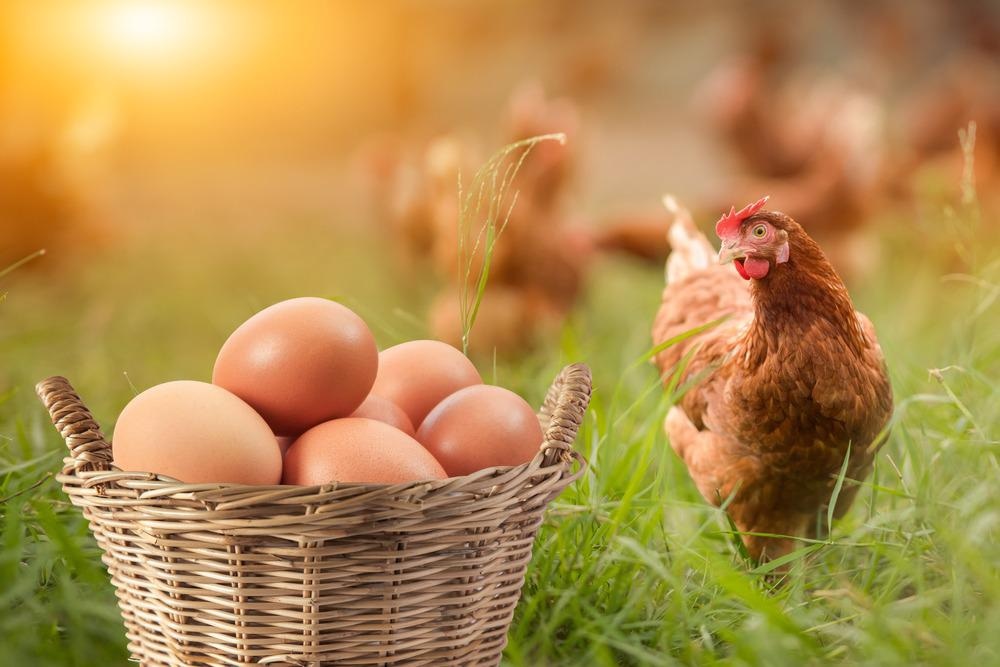
Image Credit: ShutterStock/KHON SUPAN
That is a really expensive problem because once that layer quits laying, it is very difficult, if not impossible, to get them to start again. Then you are stuck with what should be layers becoming broilers, and you are not going to make as much money as if they were laying the eggs. We find that even modest-sized egg operations can benefit by having the right amount of protein so that those layers perform to their full capacity.
Are there any other issues or challenges that need to be considered?
Unbalanced feed is a real problem because like I said earlier, it increases the feed costs. It gives you the wrong type of weight gain and at the same time, it gives you more problems. It produces more manure which is essentially the protein that did not stick to the animal. The excess fat, starch and fiber, all of that comes out in the manure.
If we could sell manure at $5 a bag, this would be a very different business. Unfortunately, it is going to cost you one way or another to get rid of the manure, to clean up the manure and deal with the environmental impact of the situation. Unbalanced feed is a real issue because you pay more to get it in and then you have to pay more to get rid of it.
Do PerkinElmer instruments offer the Perten calibrations and manure calibrations?
Yes and no. We offer most of these grain calibrations in a turnkey or we can add 20 samples to show how your operation is a different situation. They are all existing and well-developed. We do calibrations for manure for some customers and they tend to be privately developed or customized calibrations.
Measuring the moisture of manure is not very difficult. If you want to know the protein and the fat that gets excreted, it is a little bit more complicated. Unfortunately, we do not have those right out of the box, but people definitely do make that measurement and they definitely can profit from that measurement.
Why is testing important?
You cannot just test once and think that everything is okay. You need to test on a consistent basis because the feedstocks vary. The material that is coming in on your feed changes from the time of year, to place, to the provider, to literally even the individual feeds. Producers will ship everything they make and not everything a producer makes is the same quality. Those producers know who tests and who does not and they know this because of their claim’s history.
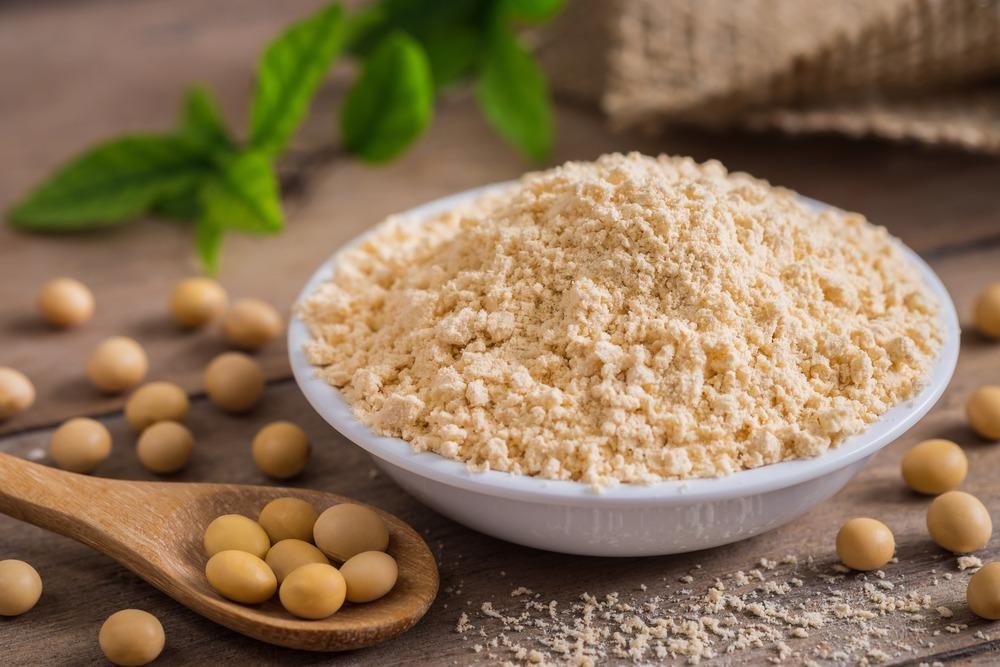
Image Credit: ShutterStock/Amarita
For example, take soybean meal. Soybean meal is made to different specifications and it really depends on your contract what protein you should expect, whether it is 42, 44, or 48% protein. The soybean meal comes in different types as well. Two of those types are solvent-extracted soybean meal and a pressed or extruded soybean meal and they are not identical in their nutritional quality. They have differences.
What are these differences and what ways are there to process soybean meal to ensure best practice?
There are a couple of differences and ways to process soybean meal and the way you process it to extract the oil changes the nutritional qualities of the soybean meal itself.
One common way to do this is to extract the oil from the soybean meal by dissolving it into hexane. The hexane is evaporated off and it gets recycled and used on the next batch of soybean meal. This is a very effective way of getting the oil out of the soybean meal. Since the oil from soy is sold at a pretty good price, it is very profitable and the big companies have every incentive to get all that oil out, leaving a meal that is high in protein but has very low-fat content.
What ways are there to extract the oil from the soybean?
There are a number of different ways to extract the oil from the soybean. It can be pressed or steam can be used in the processing. Some companies might extrude it, or they might use carbon dioxide as a super critical fluid to extract it. But while all of these techniques will remove the oil from the soybean meal, they do not remove it with the same efficiency. There is more residual oil in some processes compared to others.
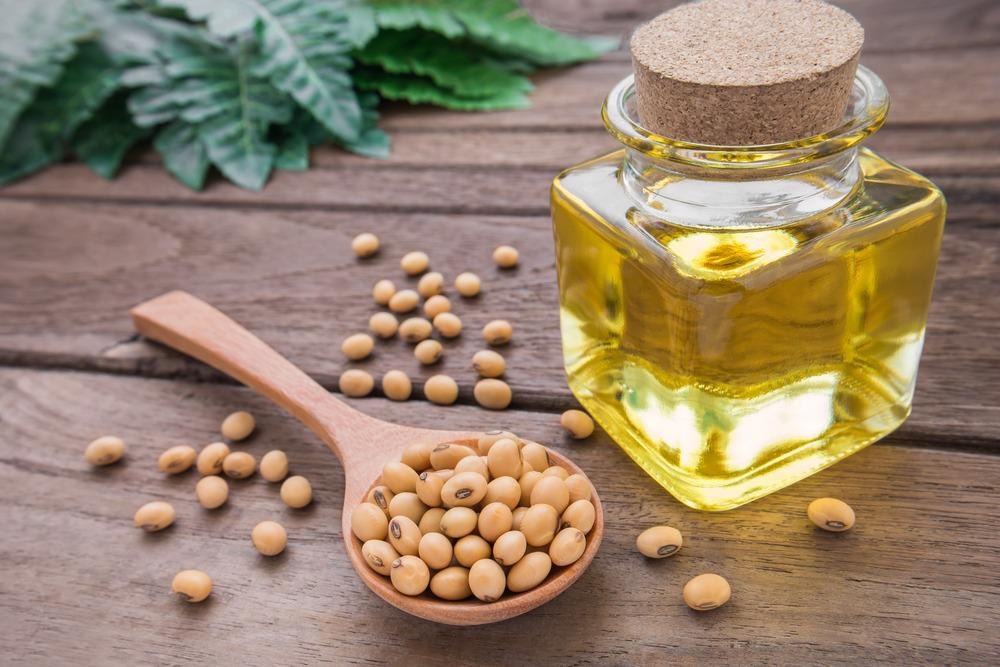
Image Credit: ShutterStock/Amarita
Instead of being a couple of percent of oil, the amount of oil in the soybean meal is normally around six to eight percent. When you buy soybean meal, it depends on how it was processed as to how much fat and oil will be in the soybean meal when it shows up. In general, the higher the oil content, the lower the protein, because you cannot make more of something without making less of something else.
How useful is the oil content and is it profitable?
Well, I have mentioned the different ways that the oil can come out, but there is also a different way that oil can go back in and that way is soap stock. Soap stock is the worst quality of oil. It is really smelly and sticky. They cannot put that soap stock in the oil that goes on the shelves and goes to the store. You would not want that smell or color in there. Soap stock is separated out in the oil process and is sold to make soap, hence the name. Soap stock is cheap. It does not get the same price that high-quality oil gets. It does not get the same price that even soybean meal gets per pound.
Soap stock can be used by some producers though because if they add the soap stock back to the soybean meal, it adds to the fat content for the animal, which does change the nutrition characteristics. Sometimes that change is desirable. It increases the palatability because most animals like the way that a soap stock tastes.
Finally, it is useful because it holds down the dust. The soybean meal is a very dusty product and if you spray a little bit of the soap stock back on, you are using a cheaper product to make more of an expensive product. And you make the product a little bit easier to handle, and the animals like it just a little bit better.
When you buy soybean meal, whether or not it was pressed or extracted, whether or not it has soap stock on it, these things are going to change the characteristics.
What limitations or restrictions need to be considered during the processing of the soybean meal?
When soybeans arrive at the plant, the beans are in shells. Those shells get cracked, the soy inside comes out, the material gets ground up into the soybean meal, and it is extracted for oil one way or another. Those hulls are separated and then something happens depending upon the manufacturer. The more hulls that you add back in, the higher that fiber is going to be in the soybean meal.
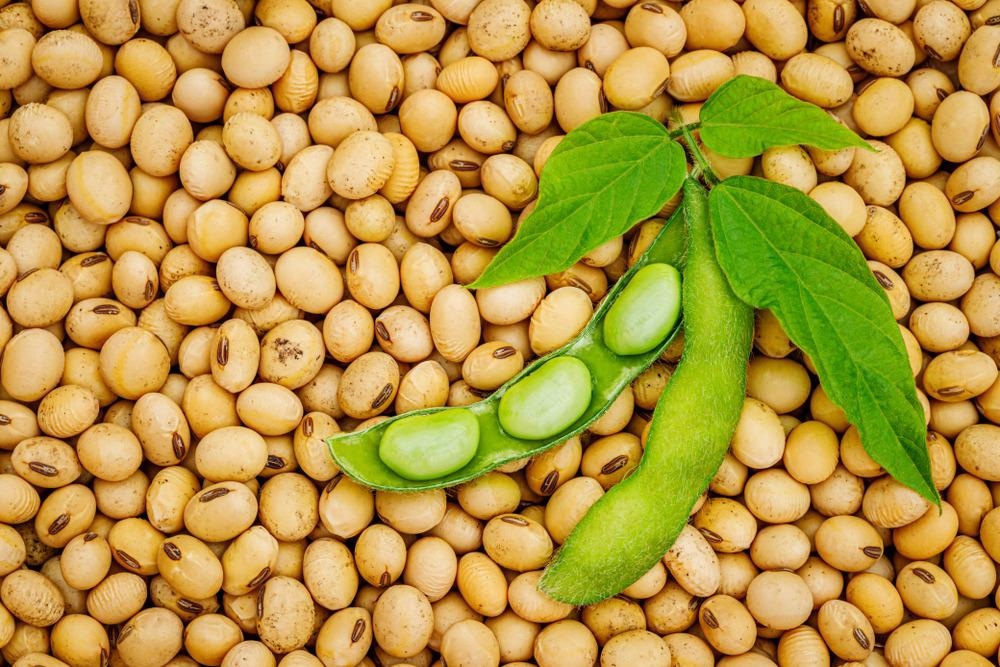
Image Credit: ShutterStock/nnattalli
Most contracts have limits on how much fiber they will allow. These limits are actually really important because the penalty for breaking the fiber limit for shipping back too much fiber with the soybean meal is higher than if you went a little bit over on the moisture or if you were a little bit under on the protein. It is the most expensive claim for a processor to have to pay.
The problem is that it is a tough business to crush soybeans for a living and these hulls are really cheap. You are going to get almost nothing for the hulls if you have to sell it separately.
In some cases, you might even have to pay somebody to haul it away. But if you can add a little bit of that back into the soybean meal, you are getting soybean meal prices for a much cheaper product, which is very profitable. It is profitable to the point that some producers think that if they are not having to pay a claim every now and then, they are not hitting their target profitability.
You need to test what is coming in on your soybean meal because the incentive to add fiber is there. The fiber does not do the same for the animal nutrition as the other things do. At the same time, they are giving you a little bit less of what you are hoping to buy by weight. It is worth enforcing your rights by making the measurement and knowing if you have a claim or not.
Is it possible and practical to monitor other feed materials using NIR technology?
Pretty much any feed material, whether it is a grain, a ground material like dry distiller grains or a pressed feed pellet, has specific quality parameters. They vary for one reason or another. A common reason that incoming materials vary is its source due to where it is grown, the variety of material climate, and any sort of preprocessing like you would find in pelleting or dry distiller’s grain.

Image Credit: ShutterStock/Mirage_studio
Source variability between the North and South of the United States is important, but you even find variability between farmers’ fields. Not all fields in the same region get the same weather, have the same quality, or even get the same sun. You will get different amounts of nutrition coming from your grain depending upon who grew it and what variety they planted.
Different varieties of the same grains are even planted, for example corn. When you get in a truckload of corn, it is not identical. The only way that you can really know what that truckload is in terms of its nutritional content is to make the measurement. These are natural products and natural products vary.
To measure these incoming natural products, a lot of people use near-infrared and an excellent near-infrared instrument is the DA 7250 model. The 7250 has lighting that comes down and shines on a sample placed in a dish. If you include the time to pour the sample, place it, put in the ID and take it off, people can do around 60 to 90 samples an hour with an instrument like the DA 7250.
Does this make it more convenient?
It is really convenient because it does not take so long that you feel like you should be doing something else. You put it in and in six seconds, you are ready to go and do something else. For that reason, companies use operators to run samples a lot of time rather than somebody in the laboratory. A lot of times production workers are using these instruments.
Protein, moisture, fat and fiber are the common things that are measured by this instrument. And as you can see, it is really simple and fast. It does not take any chemicals and is easy for any operator to learn in a couple of hours.
What available instruments are best-suited for analysis of various feed materials?
There are several, including the DA 7250, but if that is a little bit too much for operations, the next step down would be the IM 9500. It is still an excellent workhorse instrument. It does not have the capacity to handle powders, so you could not analyze soybean meal in this instrument, but it would handle whole soy, corn, wheat, and any of the other whole grains. It is a little bit slower than the DA 7250, but it is still really fast, taking less than half a minute to measure a sample.

Image Credit: ShutterStock/Fahroni
This IM 9500 is also less expensive and designed to work in dusty environments like mills, feed mills or grain elevators. So, it is a very good option if you just need to know things like the protein, moisture and fat of incoming whole grain.
If the smallest operations want an even smaller device, they can use the IM 8800. This instrument was developed for use on individual farm level operations, so even the smallest poultry processor can use an IM 8800 and the savings it makes pay for it. It takes a little longer to run a sample, about a minute or so. It is limited to moisture and protein analysis only, but it will measure corn, soy, wheat, and other crops.
If moisture is the only parameter that needs measuring, is there an option for that?
If only moisture needs measuring, the Aquamatic 5200 does the job. This is the least expensive of the instruments that I have shown so far. The other ones use near-infrared technology, whereas this uses microwave technology. The microwave goes through the grain and in 10 seconds, it can give you a moisture number.
This instrument is NTEP approved, so that you can actually use this moisture number to buy and sell. It is an officially approved instrument. If you want to use it for buying and selling, you need to file your state's official certificate. Most of them have some sort of seal and some sort of process for making sure that you are doing it correctly and that the calibration is in good form, but this instrument is much better than having nothing.
Again, adding moisture if you are shipping wet product is a way to increase the weight and profitability. If you are not measuring the moisture, it kind of begs the question as to why you are even bothering to measure the weight because you do not really care about the animals eating more or less moisture. You care about how much of the grain they are getting. And you have to know the moisture to know how much to subtract to get to the dry weight of the grain.
Are there any other variables to consider when analyzing poultry feed?
When you are measuring poultry feed, there is one variable that pops up and this variable is the feed size distribution in cracked poultry feed. You have the big particles, which are generally corn and the small ones, which are generally the soybean meal.
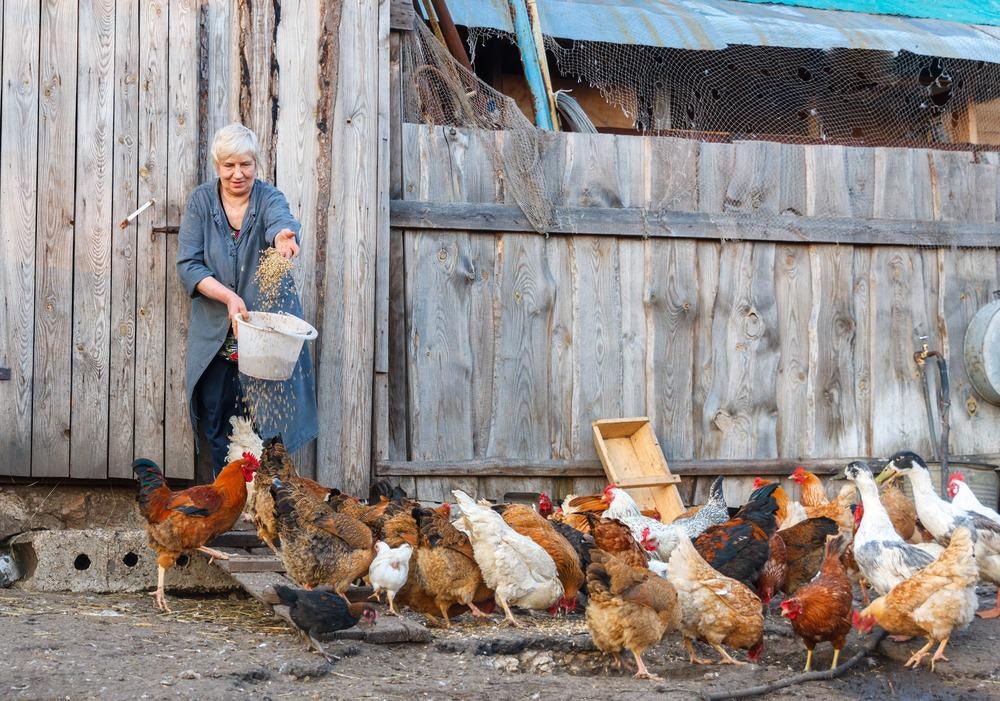
Image Credit: ShutterStock/Jenoche
The soybean meal tends to be a little bit denser, although it can be quite powdery. The corn tends to be lighter and fluffier, so when this gets shaken at all, the corn migrates to the top and the soy goes to the bottom. Those two differ by maybe 25 to 30% protein. When you look at it, the amount of protein that you see is quite different depending on how the sample has been presented.
When you measure this, we want to measure a large sample. That is why the DA 7250 has a large dish and we can average it. We could actually refill the dish several times and average multiple readings to get a more accurate measurement.
Are there any other ways to average the readings and improve accuracy?
The other way to average it is to do this type of mechanical averaging, where you take your incoming material or you take your cracked feed and grind it. PerkinElmer offers these Perten grinders. These have been in the industry for some time. They are known for their ruggedness. You would reduce the particles to roughly a 1 mm screen size and that would give you a much better average. You would be looking at the average product. If you can use the accuracy of the DA 7250 on the cracked feed, that is great. If you are really trying to push the accuracy envelope, then using a lab mill to average the sample is a really good idea.
The other place where a lab mill comes in handy is if you are getting in feed pellets, and those pellets have been over-sprayed with a pelletent, with some type of oil or fat on the outside. When you are looking at the outside, you are not seeing the whole composition of that pellet. Breaking the pellets up into about a millimeter screen size and looking at them will give you a better measurement of the total inside and outside. It is going to cause you to lose accuracy if the outside has been treated and the inside has not.
Are there any other measurement parameters to consider when using NIR?
When it comes to calcium, near-infrared is probably not the best way to make a measurement. You can get a near-infrared measurement of calcium in a plant material like in the corn or the wheat as it is coming in. Sometimes it is done in forages as well. But it is a tough measurement to make with NIR because as it says here on the first item, it turns out that the spectrum of calcium in the near-infrared is just weak.

Image Credit: ShutterStock/Evgeny Karandaev
The weak calcium spectrum makes near-infrared limited. If it is not an organic calcium, if it is a mineral calcium, it is not going to show up as strongly in the near infrared as the moisture, protein, fiber, and fat. At the same time, calcium is also dense. When you add calcium, it changes the weight percentages of everything, because it is adding to the weight, but not adding to the protein or other parameters. So, when you add calcium, it will change the apparent percentages in a mixed feed if you are looking at them by percent weight.
In what ways can you measure calcium in the feed other than NIR?
Instead of using near-infrared, there are a couple better ways to do this. One that is frequently used is oven-ash and another is atomic: either atomic emission or atomic absorption.
With oven-ash, you take a sample, you burn it and you weigh the leftover ash. It takes a while for it to burn completely and you have to let it cool down before you weigh it. You are measuring all of the ash sources, including sodium, calcium, and some other minerals, but that is a simple way to get an estimate of calcium. A way that is a little bit faster and certainly much more accurate is to use the atomic absorption technique.
Could you explain more about the atomic absorption technique and what instruments are available?
Atomic absorption instruments are available through PerkinElmer. This device essentially takes a dissolved sample, aspirates it into a flame which breaks the atoms apart, and separates them. The instrument looks at the spectrum of those individual atoms and it sees the wavelength specific to that atom. So, the wavelengths for calcium are well-separated from the wavelengths for sodium, for the wavelengths of the other atoms that are present there.
PerkinElmer has an excellent series of instruments called Pinnacle. When measuring calcium, I always encourage people to think past near-infrared and make this measurement in a way that is more responsive to calcium and just calcium.
Could you perhaps explain how a NIR instrument works in an everyday scenario?
Poultry processors receive their truckloads of incoming material that go into feed. The instruments measure the trucks as they go by carrying soybean meal.
In one example, the very first loaded truck coming in was 42% protein. Then trucks 2, 3, and 4 from the same supplier were 48% protein. The contract was specifying 44% protein. The instrument was able to keep up and take these four different measurements within an hour.
The suppliers would say they met their contract. They would say that you should expect to receive 44 on average as opposed to 44 in each individual truck unless there is some way that that is specified in the contract and most contracts do not have that kind of language.
So, the real question with those loads is, how is that feed going to go to the different birds? Are you going to average all of it and then formulate based on the combination or are they going to go into one bin on top of each other? What comes out of that bin for making your formulation is going to vary by 6% protein as it is going into the feed process. What does that do to the birds? That will cause the growth to be irregular.
What impact does this have on the birds?
Some of those birds in the same house are getting different feed than others. They grow at a different rate and gain different types of weight. Their time to harvest is going to be optimized a little bit differently and this seems to cause losses. Inconsistent incoming feed which is different than what you were expecting is going to cause issues.
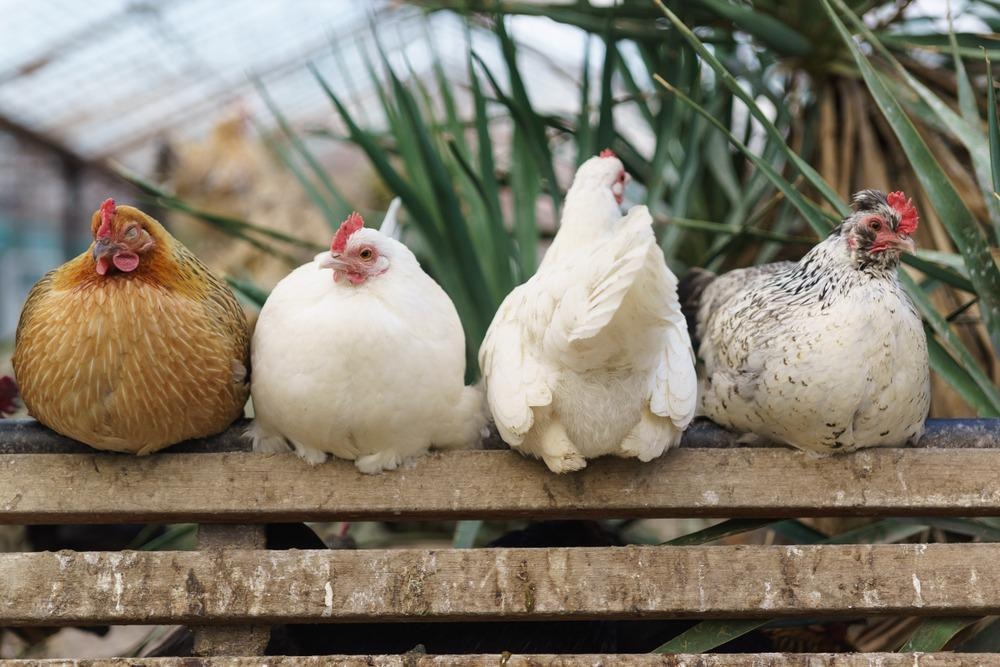
Image Credit: ShutterStock/Garmasheva Natalia
The reason it varies is because pretty much everything anybody makes has to ship. Everything the farmer harvests from his field goes to a grain elevator. Everything in that grain elevator gets sold to somebody. Any of the soybeans that come into a soybean meal processor go out of a soybean meal processor. There is no giant hole in the ground where people dump off-spec product.
How does the testing help companies implement real-life strategies for optimizing production?
Once you have decided that you want to test your incoming material, there are three different ways that I have seen companies use these tests to make money or improve their operations. There are three main strategies: validate strategy, where you are looking to just prove what you are receiving; claims strategy, where actually getting a a payment against a claim for a product that does not meet spec is a part of your profitability; and adjust strategy, which is a little more complicated.
Could you perhaps elaborate on these strategies for our readers?
Validate strategy is validating the incoming feed, using the validation and the testing that you do to find the most consistent supplier. This solves most issues. When you are buying, you are buying on price and consistency.
You profit from fewer changes to your formulation and fewer changes to how people have to change the setup to make the feed, that in turn leads to better animal management so that all of the animals in the house are getting comparable nutrition. If you get the nutrition right, the layers are happier, the broilers are happier. It is a happier operation all the way around.
The second way is to make more claims. Under this strategy, you consciously think that claims are a way to add to your profits. Claims are also how you let your supplier know that you test, because it does not take more than a few claims for them to know that you are checking on them. Normally the claims process requires that you go to an agreed-upon outside regulated wet chemistry lab.
Near-infrared results from your instrument are probably not going to be sufficient to make that claim. But from your near-infrared, you know which material is going to be out. You know if it is going to be worth submitting the claim, and then you go ahead and send it to that outside lab to get the verification that will hold up under the contract. So, the near-infrared helps you justify which samples to send out in order to make your claims.
Finally, there is the adjust strategy, and I do not see this as often. You have to be measuring everything. You have to be nimble on your feed and nutritional values, so that you can change your nutritional formula and change your feed blending to hit your target to accommodate varying incoming material. Maybe you have bins, so that you can bin the different materials differently.

Image Credit: ShutterStock/monticello
You still validate all the incoming feed, but here you do the opposite of what you might expect. You pick the least consistent supplier. You pick the least consistent supplier because they are the one that is most likely to go over or and/or to go under. So if they go over, you are getting better quality feed, more nutrition for the same money. That is profitable.
If they go under, you are going to make a claim and you are going to get paid. Since they have problems, you are going to get more claims than you would from a supplier that has everything under control. So, you will make the most on your claims with this type of strategy.
The key is that you have to blend to fix this. In order to get the proper weight gain on the animals of equal nutrition, all across the entire house, you need to be able to blend that feed or bin, and then blend that feed to hit the target nutrition. Because come hell or high water, what those animals eat needs to be controlled. I never thought picking the worst supplier would be somebody's idea, but you can make money on it and judging by the people I have seen do it, you can make more than a little bit of money at this.
There is more than one way to improving profitability then. Would you say there are any other important factors to consider?
You do not make money by measuring weight alone. More and more people test everything. Places that are measuring weight alone, are frankly the easy targets. Another way to prevent yourself making money is to only use the textbook values for protein.
Does the hull or other trash impact the results?
The haul will be mostly fiber when you do the measurement. When hauls are added back in, the apparent amount of fiber will go up and then you have dilution. If you have 1% more fiber in there, you are going to have that same 1% pushing out protein and fat. If you have more fiber, you tend to have less protein when it comes to soybean meal.
Are you able to sum up why testing the incoming feed is crucial to poultry processing firms across the entire spectrum?
To get more claims, to save money on the claims, and to save money because they know claims will be made and therefore, they are going to deliver better product. You can make money on consistent growth from the animals because you know what you received; you can make equal nutrition for all the animals.
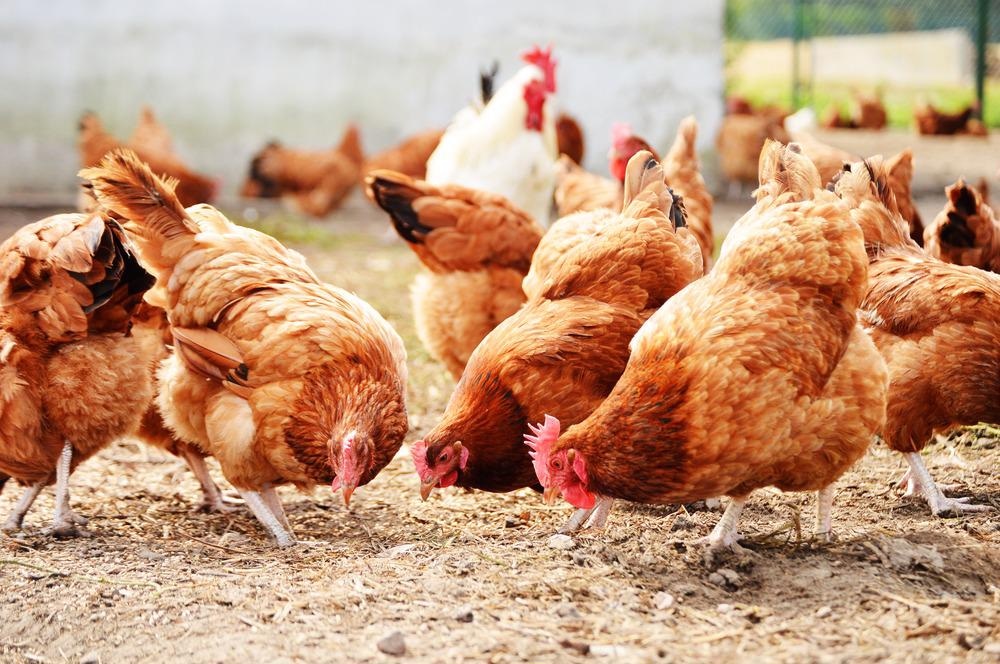
Image Credit: ShutterStock/monticello
You make money because there is less manure to get rid of. Nobody needs more manure, especially more manure that you bought at grain prices. So, if you could save just 1% of your feed cost because the product is at or below the target moisture, instead of over it, how much money would that be for your operation?
If you can save those headaches, get consistent growth, and have less manure, what would that be worth? If you keep those layers laying more consistently and for longer, what would that be worth in your operation? Normally, people pay back these NIR instruments rapidly, providing more value than the value of the instrument itself.
About Dr. David Honigs
Dr. Honigs did his graduate work under joint supervision of Professor Gary Hieftje and Dr. Tomas Hirschfeld at Indiana University in Bloomington. He served as an Assistant Professor of Analytical Chemistry at the University of Washington for a few years. Following that he worked at NIRSystems (now part of FOSS) on NIR instruments. He started a company, Katrina Inc. which made process NIR instruments.
For the last almost 20 years he has worked at Perten (now Perkin Elmer) on Near Infrared Instrumentation and applications in the food industry. He has 35 research papers as listed on ResearchGate.com He has 10 issued US patents.
About PerkinElmer Food Safety and Quality
PerkinElmer Food Safety and Quality is committed to providing the innovative analytical tools needed to ensure the global supply of high-quality, safe and unadulterated foods.

This information has been sourced, reviewed and adapted from materials provided by PerkinElmer Food Safety and Quality.
For more information on this source, please visit PerkinElmer Food Safety and Quality.
Disclaimer: The views expressed here are those of the interviewee and do not necessarily represent the views of AZoM.com Limited (T/A) AZoNetwork, the owner and operator of this website. This disclaimer forms part of the Terms and Conditions of use of this website.